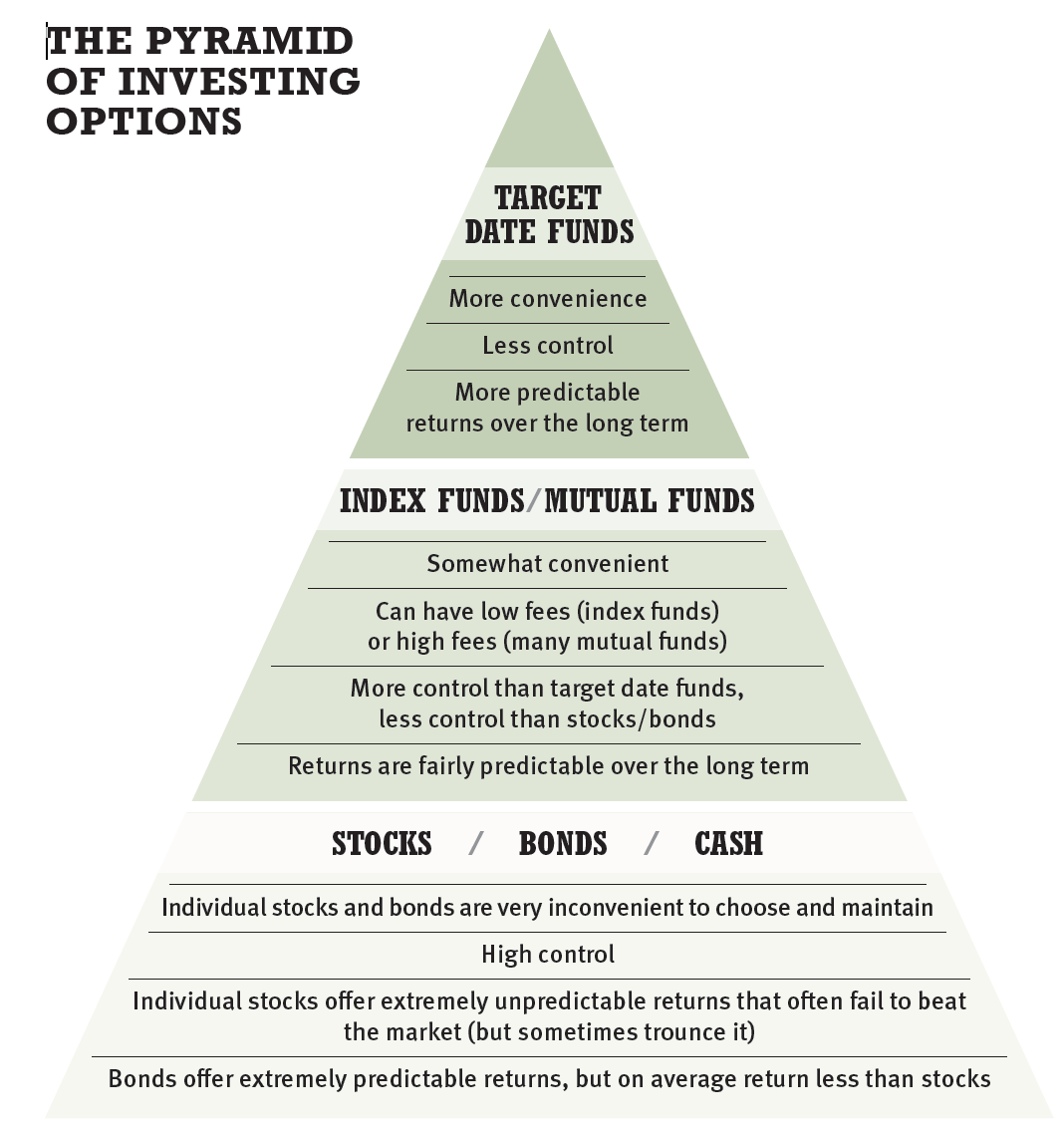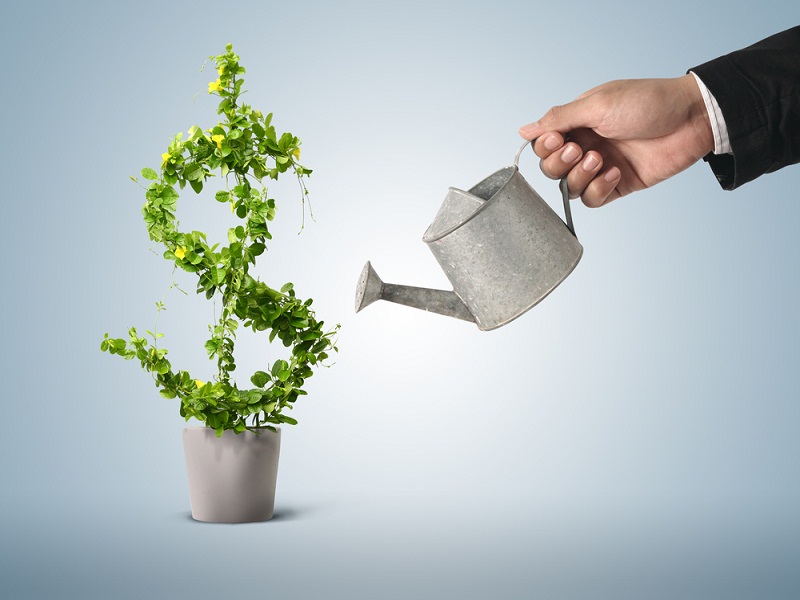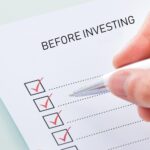No one can guarantee a completely risk-free investment, that is not why we are here, we are here to provide you with the steps you can take to reduce risk. Investing beginners need to carefully consider every step, develop a financial plan; decide if you’re investing for retirement, creating passive income, or building an empire to become rich.
Develop a financial plan to determine your current money and long-term goals. A plan will also help forecast any “what if” scenarios and mitigate their risk. Maintain a balance in your budget for more security and less risk.
Saving for Retirement
Median Balance of 401K by age
| Under 25 $1,325 |
| 25–34 $8,192 |
| 35–44 $23,491 |
| 45–54 $43,467 |
A Roth IRA will allow you to pay taxes on income now so that in your retirement you can remove it and its capital gains without being taxed again. You can contribute as long as you earn under 130K.
Brokerage recommendations for Roth IRA:
Vanguard, Fidelity, Charles Schwab, WeBull and TD Ameritrade
I’ll Teach You to be Rich by Remit Sethi recommends income be distributed in the following percentages:
401K 5%
Roth IRA 5% till you reach the $6,000 yearly limit
Savings 5%

If you are planning for retirement you will need to add how much money you need to live off of to your plan. Typically, people will either believe they need less, or twice as much as what they would need to live off, 1.7 million is the number people surveyed believe they need to retire.
AARP suggests using this method to determine how much you need
How much will you spend? When planning retirement, you need to plan that you will spend about 80% of what you spend pre-retirement.
Based on a study in 2018 the average American’s expenses are $5,102 a month. If that’s your monthly spending you need $4,081.60 a month in retirement. If you own a home be sure to remember your property taxes and potential increases over the years when you are retired.
If you retire at 65 as many do, you will need $48,979.20 yearly to live based on AARP. You want to live till you’re 100 of course so you will need that 1.7 million everyone believes they need to retire.
The American median income is $51,000 a year after taxes, if that’s your income you’re going to need cut down on those monthly expenses to make a retirement plan work.
Now, I’m assuming you don’t make $51,000 a year and you don’t spend only $48,979.20, you know what you make and you know what you spend. If you are spending 80-90% of your income like over 70% of Americans then it’s time to plan. Imagine saving 1.7 million for retirement and then discovering it’s going to be a tight budget to live off of because you’re used to spending twice that a month. Be prepared and plan those golden years for fun, not dread and poverty.
Investing in the stock market averages returns at about 9-10% annually, your 401K is going to be about that. If you start putting away now and you are already twenty years into your career it’s going to take some extra effort in terms of budgeting. I really enjoyed the book I will Teach You to be Rich, he has a fun approach to getting out of debt and saving. Investing can be a lot of fun if you stick to what you know and be smart.
Peter Lynch’s 8 Rues to Investing
- Small investors have an advantage
- Know what you own- make sure you can explain why you own a stock to a ten-year-old.
- Don’t invest purely on others opinions, do your own research.
- Focus on the company behind the stock- stocks are not lottery tickets, if the company goes well, the stock will also go well.
- Don’t try to predict the stock market, or the economy. He said “if you spend 14 minutes on economics a year you waste 12 minutes,” predictions are a waste.
- Market crashes are great opportunities. Every 2 years the market loses 10%, it’s called a correction. 50 declines in 92 years, of those 15 have been 25% decline, every 6 years on average this happens it’s called a bear market. Be available with money for when these happen, take advantage of a volatile market for buying good companies for less.
- You have plenty of time. You could have bought Walmart 10 years after it went public and still made 30X your money, or 3 years after Microsoft and still made 10X your money. You have time, stocks are not lottery tickets, there is a company behind the stock.
- You need an edge to make money. Buy what you know, you only need a few stocks in your life time and they are in your industry.
Buy when stocks are cheap and stick to what you know.
Safe investing for retirement plans
Government Securities: These are instruments that are easy to trade, as a rule they have a low growth rate but the risk is almost zero. Of course, in the event that the state loses the ability to repay its debts the collection of this type of investment becomes problematic, but states typically pay their debts, right? Do your research
Stock Exchange Funds They require a relatively small amount of money, reducing the risks of making decisions about what exactly to invest in, ETFs are an easy way to invest without needing to manage them.

Creating a Passive Income Stream
Since you have plenty of money to put into retirement and have decided you want more than that 1.7 million, you want 8 figures, or 9, you need to plan multiple passive income streams.
First things first. Who are you, want do you want and what are your skills, what are your strengths? Let’s focus on the areas you already know about and build from there; use what you already know.
Real Estate
This is always the first on the list. From the beginning of time someone bought, traded, or pillaged property to expand their wealth.
Things to consider
How much return do you need on the property, make sure you have the right area, it should be up and coming so you can buy at a lower price than it’s worth and it should be a safe area. People are moving back to urban environments in some markets and into rural in other markets. Determine what the trend is in your area, look at 30 year buying habits and make sure the area doesn’t have any development, or political initiatives that could lower the property rate in the foreseeable future. If you’re looking rural be sure to check the EPA for any environmental initiatives. You should be buying as low as possible in an area that is up and coming so that you can rent the property till you’re ready to sell and then sell at a nice profit. That’s the ideal anyway.
Peer-to-peer Investments
Lending on the principle of man-to-man is a relatively new concept that has developed with Internet technology, it is a form of online lending- without the participation of banks. Using the appropriate P2P platform, you can become an investor buying loans. These platforms work pretty well at the moment, but there is a risk of bankruptcy, in this case there is no money back guarantee.
Investments in corporate bonds
Domestic and international companies, such as banks or large energy companies. In this case, you have an attractive interest rate, but it is not guaranteed, which means that the investment risk is high.
Dividend Stocks
Buy a stock and hold it for years, every year you get a percentage from their profits, some pay quarterly, some annually. Make sure the company is doing well and the price for the stock can range based on what Mr. Market is doing. Try to buy low and hold.
Some to consider based on dividend percentage in January 2021 are:
- Home Depot (HD)
- Costco (COST)
- Target (TGT)
- Analogue Devices (ADI)
- Proctor & Gamble (PG)
- AT&T (T) I’m in tech so this on is in my portfolio of course
- Realty Income (O)
- Verizon (VZ) I have this one too
- Microsoft (MSFT)
- Apple (APPL)
- Welltower (WELL)
My brother likes USOI because they pay high dividends, but with the move toward electric and off of oil it might be too risky for you. I think we won’t be seeing oil go away anytime soon, but who knows, politicians are too flaky to predict.
The Motley Fool recommends looking for the following in your selection of dividend stocks:
- Payout ratio: A stock’s payout ratio is the amount of money it pays per share in dividends, divided by its earnings per share. In other words, this tells you what percentage of earnings a stock pays to shareholders. A reasonably low payout ratio (say 60% or less) is a good sign that the dividend is sustainable.
- History of raises: It’s a very good sign when a company raises its dividend year after year, especially when it can continue to do so during recessions and other tough economic times like the COVID-19 pandemic.
- Steady revenue and earnings growth: When looking for the best dividend stocks to own for the long term, prioritize stability in the companies you consider. Erratic revenue (up one year, down the next) and all-over-the-board earnings can be signs of trouble.
- Durable competitive advantages: This is perhaps the most important feature to look for. A durable competitive advantage can come in several forms, such as a proprietary technology, high barriers to entry, high customer switching costs, or a powerful brand name, just to name a few.
- High yield: This is last on the list for a reason. A high yield is obviously preferable to a lower one, but only if the other four criteria are met. A high dividend is only as strong as the business that supports it, so compare dividend yields after you make sure the business is healthy and the payout is stable.
Dividend stocks are long term investments, only put in what you don’t need to take out, it’s not worth it if in two years you’re just going to take it all out. That’s why you need cash savings, you might need money so keep some of that in your hands, or under the bed, or in a bank.
Making Millions Takes Serious Risk
You want to make more than retirement and passive income, you want millions, you want wealth that can be passed on to your grandchildren.
You need to:
Plan retirement in a safe way, plan passive income with minimal risk and plan money making with higher risks, but be sure to save a safety net for when there are failures because with risk, there are always failures. Live extremely frugally so that you have failure insurance in your personal savings.
If you’re organized and diverse you can mitigate the risk. Lose one place, win another, it’s normal; I’ve lost and won a lot in my life, something I’ve noticed is as long as I keep moving and doing the work, I always get the money back. My first big loss I earned back 10X what I lost, the second time I lost, I earned back 15X what I lost and the most recent is still to be determined, but I’ve already gotten back 100% of what I lost and got back to where I was the year I lost it all. It’s taken me two years to build it back to where it was, but along that road I was traveling Europe and having a lot of fun so the time to earning wasn’t as fast as if I was in New York.
It’s normal to have big losses when the risks are high, just know, the gains always come back. I remember someone said that money is loyal to her master, she always returns to a good master. A good money master knows where to put the money so that she can grow more. A good money master learns from their mistake and keeps their eye on the goal.
The thing about making bigger money is that you need to own more of the risk. The reward is great only because you own the risk. It takes guts!
Investing for big returns means big risk
Forex market
this type of investment brings the big profit, it is therefore associated with the greatest risk. You can learn all about this form of investing for free with Babypips. Always learn the basics for free and only sign up for courses with people who prove they have advanced knowledge and support.
Growth Investing large scale
You find a company you know has a major shot and you buy a lot of it early on. This takes a lot of research and you need to know the industry really well. Make sure that their product is viable and they have enough cash to make it happen. If a company has one investor throwing in all the money to make it happen make sure that investor has a history of following through on what they started.
Business
You start a business that sells either a product, or service which can be scaled year over year. It takes about 3 years to start making profit off a company and 7 years to see it making major money. After 5 years a company should be earning a million a year at least.
Chose a business idea, plan and then take the steps to build it little by little. Enjoy those early days where its super hard and all a mess because those will be your best memories. When I look back at the beginning when I woke up at 6am to be to work by 7 then worked till 8, or 9 pm every day six days a week I look back with the fondest thoughts.
I think of my hardest times built me, there is no such thing as get rich quick, no shortcut, there are doors that open to make it easier, but be careful because your next big loss might be behind one of those open doors.
Follow your gut and work hard. If you want the grit it takes to do all this then keep following along and subscribe. I’ll be sharing more about building real businesses and send all subscribers an e mail a week with a business ideas and how to make them work. I’m still in the process of having them written and then edited so stay tuned.
I’m not a financial planner, I just read a lot of books, I invest and know a lot of investors. I’m paranoid and often see risk before reward. Do your own thinking and follow your gut with investing. Something I’ve noticed from a lot of people is that when they made a mistake they felt something was wrong, please listen to that something is wrong feeling and get out before you lose what you can’t afford to lose. The same goes for feeling something is right and not doing it. Be intelligent with your money and have fun researching.











